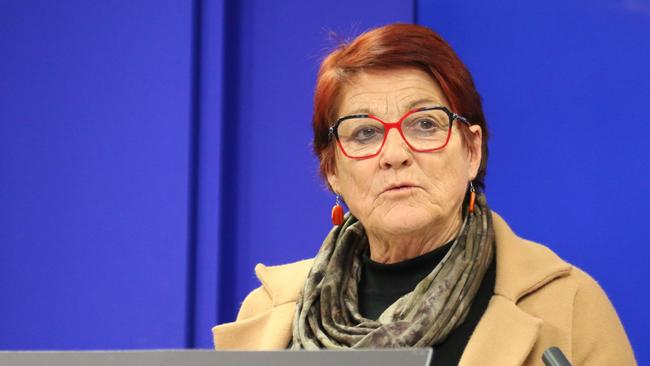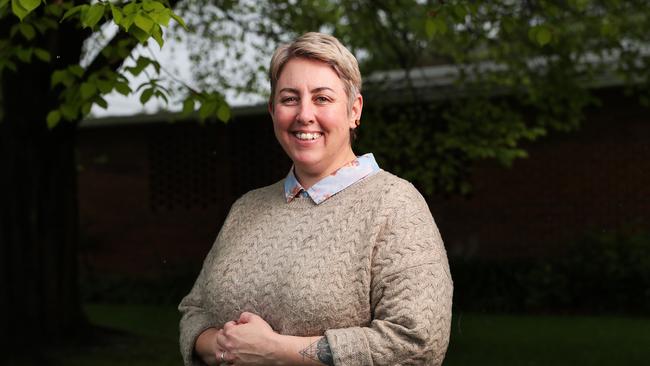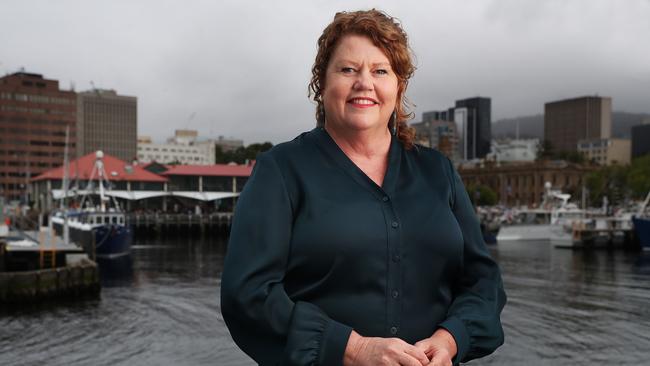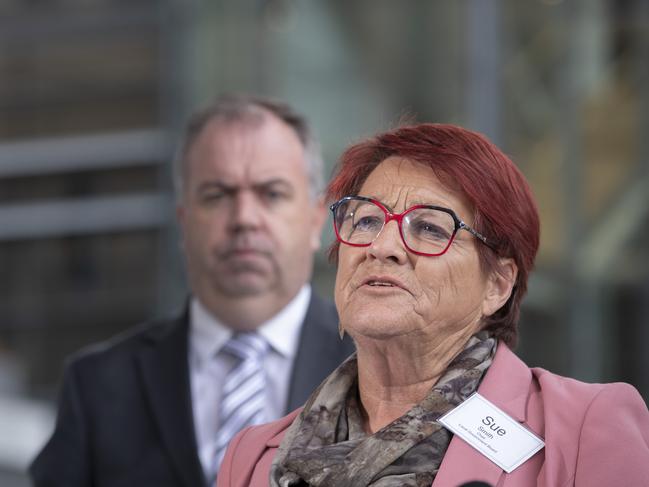Anna Reynolds and Michelle Dracoulis concerned by amalgamation talks
The possibility of council amalgamations has left some Tasmanian mayors with concerns the smaller regions will be at risk of losing their representation. LATEST >>

Tasmania
Don't miss out on the headlines from Tasmania. Followed categories will be added to My News.
The possibility of amalgamations puts smaller municipalities at risk of losing their representation, a Tasmanian mayor says, after a report recommended radical changes to Tasmania’s local government structure.
As part of the local government review, the state government is considering merging councils, proposing nine “community catchments” which it will undertake community consultation around.
Derwent Valley mayor Michelle Dracoulis is one of the mayors concerned by the possibility of amalgamations.
“Back when the idea was put to us, we were given an assurance we wouldn’t be facing forced amalgamations,” Ms Dracoulis said.

“The only thing that’s changed is the language. They’re now calling it mandated consolidation, which means exactly the same thing.”
Ms Dracoulis said it could reduce the chances of someone from the Derwent Valley being elected.
“There’s a threat to maintaining local representation, there’s many in the community that value having access to local representation who understand local issues,” she said.
“If you look at merging us with somewhere with a larger population base, you’ve got a much higher constituent base in larger areas, you do risk having the outliers not as well represented.
“The issues that are faced by rural and regional communities are very different to their larger neighbours.”
The proposed changes would mean a shake up for the City of Hobart, which would be broken up to feed into two of the ‘community catchments’.
Hobart Lord Mayor Anna Reynolds said the were two possible issues which stuck out at first glance.
“The first is that under the some of the scenarios contemplated in the report, Hobart could be split in two and lose its coherence as a city,” Ms Reynolds said.
“There is no capital city in Australia that is split in such a way between local government areas.
“This would have significant consequences for Hobart as the state’s capital, and the economic and business engine room for Tasmania.

Ms Reynolds said it could mean higher costs for some ratepayers.
“The second concerning issue is that the report contemplates Hobart incorporating some regional and rural areas of the state,” she said.
“This would result in Hobart ratepayers incurring significant costs to service these distant areas that are not, and don’t consider themselves to be, part of Hobart as we know it.
“We’ll take a bit of time to read, consider and discuss the report before responding in detail to the ideas in the report.”
West Tamar mayor Christina Holmdahl, who is also outgoing president of the Local Government Association of Tasmania said she was also still in the early stages of considering the report.
“The report indicates the government wants to work with councils on running those community consultation programs,” she said.
“At this stage there’s no additional commitment of funding for councils to undertake that. It’s a cost … councils will have to allocate staff.”
Radical plan to cut Tasmania’s councils
The number of councils in Tasmania is likely to be reduced after a report found a need for “substantive structural reform” in the local government sector.
The report authors and the local government Minister say no final decision has been made, they have no number in mind of how many councils could go — but say waiting for voluntary mergers is not the way forward.
The state government asked the Local Government Board to look at reforms in 2021 amid concerns the state had too many councils.
Chair Sue Smith and Local Government Minister Nic Street released the Future of Local Government Review Stage 2 Interim Report on Wednesday.
The report says substantial reshaping of council boundaries is needed — and it identified nine
“community catchments” as a basis for further consultation.
They include parts of Hobart, Kingborough and the Huon Valley council areas which could be joined into a super-council; as could parts of Hobart, Glenorchy, Brighton, Kingborough, Derwent Valley and Clarence, Brighton, Sorell and Tasman councils.

Board chair Sue Smith said there was no preconceived outcome from the report and consultation would determine the final recommendations that went to government.
“This is not about drawing boundaries, it’s not about what will be we are not taking 29 councils and rolling them down into nine,” she said.
“There are no numbers. We have not talked about numbers in this particular stage.
“I urge the media and communities not to make presumptions that we are going from 29 to nine — because if I was a betting person, I would say you would be putting your money on the wrong horse.”
Local Government Minister Nic Street said the government would take any changes to parliament.
“I’m not going to guarantee any particular outcome,” he said. “What I can say is that I’m dedicated to this process and I’m dedicated to getting an outcome that serves the people of Tasmania well.”
He stressed the nine “catchment areas” included in the report were not future council areas.
“I want to be absolutely clear that these catchment areas are not preliminary or final or draft municipal boundaries for any structural reform that takes place,” he said.
“This is an opportunity for all councils in Tasmania and all interested stakeholders to provide their feedback to the board on what’s contained in the stage to report by the 21st of June.
“We understand that any significant structural reform to any area of the state is going to be contentious.
“What we’ve heard from both the sector and from people who engage with local government is that that’s not what we’ve got at the minute.”
The report recommends a “hybrid model” under which large urban councils would operate on a stand-alone basis and smaller merged rural councils would share resources to deliver services.
“Its preferred approach would involve significant mandated changes to existing council boundaries to create a smaller number of larger, more capable councils,” the report said.
“The scale and extent of the consolidation needed to deliver significantly better services will, unfortunately, not occur on a purely voluntary basis within the current framework,” the report said.
“The status quo is not an optimal or sustainable model for the sector as a whole, given growing demands, complexity, and sustainability challenges.
The next stage of the report will consult with communities and stakeholders and report to government by September 30.
Mr Street said the board’s consideration of local government’s future role in planning approvals had been deferred.
Labor’s Luke Edmunds said his party was opposed to forcing council mergers.
“There’s a lot of language in there that is essentially code for forced amalgamations.
“Labor doesn’t support forced amalgamations.
“Premier Peter Gutwein, as recently as 2019, said that the best results come from communities working together, not having a top down model, where they have amalgamations forced on them.”
Greens MP Rosalie Woodruff said she was happy that parliament would have a say in eventual reforms.
“The onus is on Minister Street to ensure meaningful engagement occurs at a local level about proposed changes.
“Any changes must reflect the best interests of our state and its people.”
Originally published as Anna Reynolds and Michelle Dracoulis concerned by amalgamation talks




